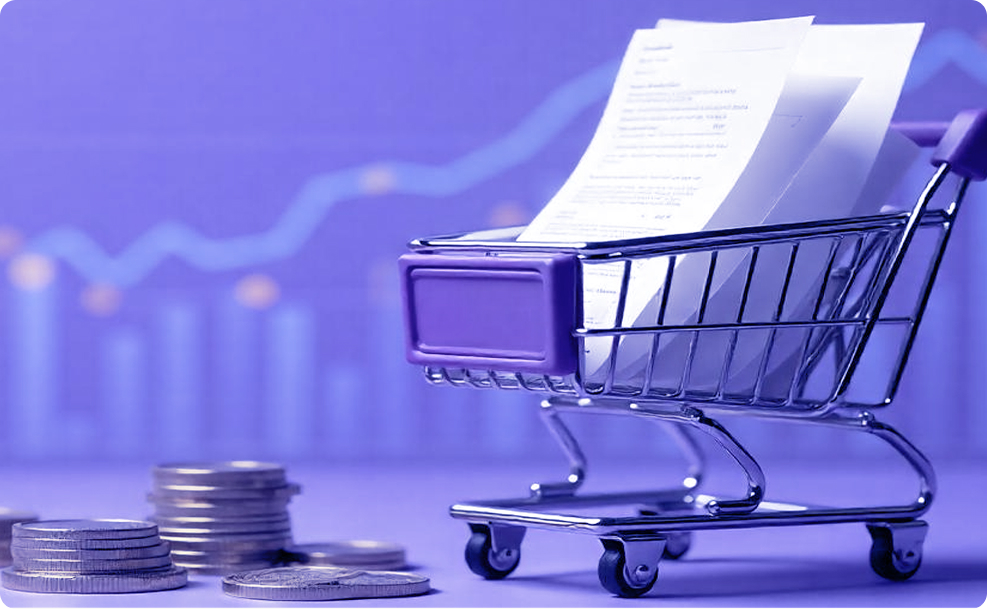In 2025, predictive sales analytics will become pivotal in driving sales and business growth as the market becomes increasingly competitive. It’s a powerful tool that uses machine learning algorithms to forecast future sales trends based on historical data. The ability to anticipate customer behavior and market shifts empowers businesses to make better decisions that impact their bottom line.
The predictive analytics market is projected to grow to $28.1 billion by the end of 2026. This shift from traditional approaches to data-driven methods will change how businesses interact with their customers. Embracing AI is no longer optional but a necessary component of success in the current market landscape.
In this blog, we’ll explore how using predictive analytics for sales forecasting is the way forward for businesses.
What is Predictive Sales Analytics?
In simple terms, predictive sales analytics is a comprehensive approach that leverages historical data, statistical algorithms, and machine learning techniques to forecast future sales. It helps businesses make more strategic, data-driven decisions by providing valuable insights into customer behavior and market trends.
How Does Predictive Sales Analytics Work?
Predictive sales analytics operates as a systematic process that combines data analysis, statistical modeling, and machine learning to forecast future sales outcomes. Here’s a breakdown:
1) Data Collection
Predictive analytics requires historical data. The first step is gathering relevant data from a multitude of sources. These include:
- Historical sales records
- Customer demographics
- Market trends
- Economic indicators
Organizations often integrate this data from CRM systems, transaction records, and external databases to create a comprehensive dataset.
2) Preparing the Data
The data is cleaned and organized after collection. This process involves:
- Removing inaccuracies
- Handling missing values
- Ensuring the data is in a format suitable for analysis
This is a critical process, as it lays the foundation for the reliability of the predictive models.
3) Feature Selection
At this step, the variables that impact sales the most are identified. These may include:
- Customer behavior patterns
- Product attributes
- Seasonal trends
- Marketing efforts
Selecting the right features helps refine the analysis and enhances the accuracy of predictions.
4) Model Development
At this stage, statistical algorithms and machine learning techniques are applied to analyze the data. Various models can be used, such as:
- Regression analysis
- Decision trees
- Neural networks
The goal of these models is to uncover patterns and relationships within the data that can predict future sales performance.
5) Training and Testing
The next step is to train the models on the collected data to recognize patterns and make forecasts. A portion of the data is reserved for testing the model’s accuracy. This iterative process allows organizations to refine their models based on performance metrics.
6) Forecast Generation
Once the models are validated, they generate forecasts regarding future sales trends and customer behavior. These forecasts provide actionable insights to help businesses plan their strategies effectively.
7) Continuous Improvement
Predictive analytics in sales is not a one-time effort; it requires continuous monitoring and refinement. The models need to be trained with new data, such as:
- Changes in market conditions
- Shifts in customer preferences
This keeps them relevant and accurate.
Benefits of Predictive Sales Analytics
While the word “game-changer” has been thrown around a lot, AI-powered predictive analytics is truly a game-changer in sales. It delivers a plethora of benefits to businesses of all sizes. Here’s a look at the benefits offered:
1) Improved Accuracy of Sales Forecasts
Traditional methods heavily rely on historical trends or subjective estimates, which can lead to inaccuracies. Predictive sales forecasting tops them by involving complex algorithms and machine learning models. These can:
- Scan vast amounts of data quickly
- Identify correlations and patterns with precision
This makes the forecasts more reliable and helps businesses set realistic targets and allocate resources more effectively.
2) Make Sales Operations More Efficient
Predictive analytics streamlines sales processes by automating routine tasks and prioritizing high-potential leads. It allows the sales team to focus on:
- High-potential leads
- Closing deals faster
This increases productivity by boosting the number of quality interactions.
3) Proactive Sales Management
Sales managers can adopt a proactive approach by anticipating challenges and opportunities. For instance, predictive analytics can:
- Warn about a potential decline in engagement in a particular area
- Allow managers to create targeted campaigns to re-engage customers
4) Personalized Customer Experiences
Predictive sales analytics allows businesses to tailor their interactions with customers based on:
- Individual preferences
- Customer behaviors
This enhances customer satisfaction and loyalty, ultimately leading to increased sales.
5) Strategic Resource Allocation
AI helps guide the distribution of sales and marketing budgets toward the most promising opportunities, ensuring businesses invest in initiatives that drive growth.
6) Competitive Advantage
Companies utilizing predictive sales analytics gain insights that may not be readily available to their competitors. This empowers them to:
- Capture market share
- Respond swiftly to emerging trends
7) Improved Customer Retention
AI identifies early signs of dissatisfaction and churn, providing personalized recommendations to retain customers and protect revenue streams.
8) Scalability of Sales Operations
As businesses grow, predictive sales analytics helps make sales processes more efficient and scalable, enabling organizations to handle larger volumes of leads and customers without proportional increases in resources.
9) Smarter Risk Management
AI identifies potential risks in the sales pipeline or customer portfolio early on, allowing businesses to take preemptive actions to mitigate these risks and protect revenue.
Predictive Sales Analytics Examples
1) E-commerce Personalization
Predictive sales analytics enhances recommendation engines by analyzing:
- Browsing histories
- Purchase patterns
- Demographic information
AI predicts products customers are likely to buy and helps create personalized shopping experiences.
2) Automotive Industry Sales Forecasting
Predictive analytics forecasts vehicle sales by integrating:
- Customer demographic data
- Historical sales figures
- External economic indicators
This helps optimize production schedules and distribution strategies.
3) Retail Marketing Optimization
In retail, AI analyzes:
- Transaction data
- Shopping patterns
It identifies trends like seasonal spikes or product popularity shifts, helping businesses adjust inventory levels and marketing promotions accordingly.
4) Telecommunications Customer Retention
Telecom companies can identify at-risk customers using:
- Usage patterns
- Service interactions
AI can help implement targeted retention strategies to reduce churn.
5) Financial Services Risk Assessment
In the fintech sector, AI helps with:
- Predicting credit risks
- Identifying fraud cases
AI can flag unusual spending patterns, allowing businesses to intervene proactively.
6) Healthcare Patient Outcomes Prediction
Healthcare providers can predict patient outcomes and improve care by analyzing:
- Patient history
- Treatment responses
7) B2B Lead Scoring
B2B companies use predictive analytics to score leads based on:
- Website visits
- Email engagement
- Previous purchases
The Best Predictive Sales Analytics Tool
NavAI is a robust predictive sales analytics tool that can help you get the most out of your data. It has a conversational interface, allowing you to get answers to sales-related queries in plain English.
NavAI’s mobile-friendly UI lets you run your business on the go and find your best leads to drive long-term growth.
Switch to NavAI
FAQs
What data is typically used for predictive sales analytics?
The data used for predictive sales analytics includes historical business data, customer demographics, social media activity, website traffic patterns, competitor data, and macroeconomic indicators.
How can I choose the right predictive analytics model for my business?
The best model depends on your data, sales process complexity, and business goals. It’s often recommended to experiment with different models and compare their performance to find the best fit. NavAI’s AI consultants can help you with this.
What are the potential challenges of implementing predictive sales analytics?
Challenges include the need for high-quality data, complexity in model implementation and maintenance, potential bias in data and models, and ongoing training needs. Our experts can guide you through these challenges for successful implementation.





